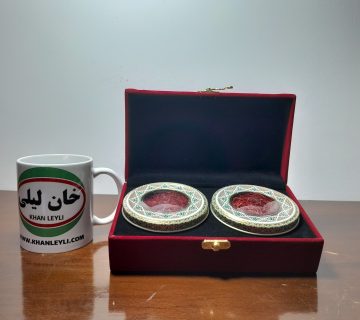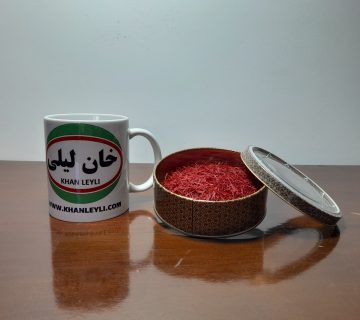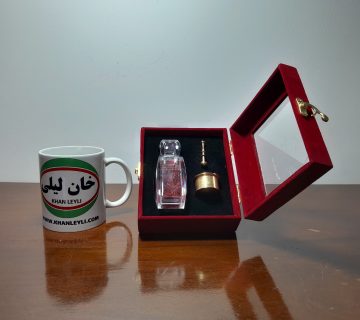Determining the best country for exporting saffron can depend on various factors, including the quality of saffron produced, cultivation practices, market demand, and trade relationships. As of my last knowledge update in January 2022, Iran has historically been the largest producer and exporter of saffron globally. Iran’s saffron is renowned for its quality and is considered a significant player in the international saffron market.
Several factors contribute to Iran’s dominance in saffron production and export:
- Climate and Soil Conditions: Iran’s climate and soil conditions in regions like Khorasan Razavi are conducive to saffron cultivation. These areas provide the ideal environment for the Crocus sativus plant, from which saffron is derived.
- Tradition and Expertise: Iran has a long history of saffron cultivation, dating back centuries. The tradition and expertise passed down through generations contribute to the cultivation of high-quality saffron.
- Large Production Volume: Iran produces a significant portion of the world’s saffron, allowing it to meet the demands of both domestic and international markets.
- Global Reputation: Iranian saffron has established a strong reputation for its color, flavor, and aroma, making it highly sought after by consumers and industries worldwide.
- Export Infrastructure: Iran has well-established export infrastructure and trade relationships, facilitating the smooth export of saffron to various countries.
While Iran is a major player, other countries also produce and export saffron, including India, Spain, Afghanistan, and Greece. The choice of the best country for saffron export can depend on specific preferences, market dynamics, and the quality requirements of buyers.
It’s important to note that market conditions and trade dynamics can change, so it’s advisable to check the latest information and trade statistics for a more accurate assessment of the current best country for exporting saffron.
Saffron Sovereignty: Iran’s Reign as the Premier Exporter
e world of exotic spices, saffron stands as a regal crown jewel, and no country wears this crown more majestically than Iran. With its rich history, favorable climate, and unmatched expertise, Iran has solidified its position as the premier exporter of saffron, a golden treasure revered worldwide. This essay delves into the factors that underpin Iran’s saffron sovereignty, exploring the nation’s historical legacy, cultivation prowess, and global impact as the unrivaled leader in saffron exports.
Iran’s saffron story is a tapestry woven through centuries, dating back to ancient times. The cultivation of saffron has become deeply ingrained in the cultural and culinary heritage of the country. The historical legacy not only signifies Iran’s mastery of saffron but also contributes to the mystique and allure that surrounds Iranian saffron on the global stage.
The heartland of Iranian saffron cultivation lies in the province of Khorasan Razavi, where nature has bestowed ideal climatic conditions for saffron cultivation. The combination of sunny days, cool nights, and well-drained soil creates a perfect environment for the delicate Crocus sativus flowers to flourish. This natural bounty sets Iran apart, allowing for the production of saffron with unparalleled color, flavor, and aroma.
Iran’s saffron sovereignty is not merely a result of favorable conditions but also the expertise passed down through generations. The cultivation, harvesting, and processing of saffron have become an art form, with traditional knowledge and techniques meticulously preserved. The expertise ingrained in Iranian saffron cultivation contributes to the consistent high quality that buyers around the world seek.
Iranian saffron has set the gold standard in the global market. Renowned for its deep red color, potent aroma, and robust flavor, Iranian saffron is the benchmark against which all others are measured. The global reputation of Iranian saffron has created a strong demand, making it the preferred choice for chefs, spice connoisseurs, and industries around the world.
Iran’s saffron sovereignty is not only rooted in production but also in its strategic export infrastructure. The country has established efficient trade routes, export facilities, and strong trade relationships. This infrastructure ensures the smooth flow of Iranian saffron to international markets, meeting the demands of diverse cultures and culinary traditions.
The Iranian government plays a pivotal role in upholding the sovereignty of its saffron exports. Strict regulations and quality control measures are in place to maintain the integrity of Iranian saffron. Government support ensures that each strand meets international standards, securing Iran’s reputation as a reliable and quality-centric saffron exporter.
Iranian saffron serves as a cultural ambassador, fostering connections and diplomacy through its aromatic threads. As Iran exports its saffron to various corners of the world, it not only contributes to the nation’s economy but also creates cultural ties, enhancing global appreciation for Iran’s rich heritage and culinary contributions.
Beyond its cultural and culinary significance, Iran’s saffron sovereignty has a substantial economic impact. Saffron exports contribute significantly to the nation’s economy, providing employment opportunities and driving economic growth in the regions where saffron is cultivated. The golden harvest of saffron becomes a symbol of economic prosperity for the nation.
In conclusion, Iran’s saffron sovereignty is a testament to the nation’s historical legacy, ideal climatic conditions, generational expertise, global reputation, strategic export infrastructure, government support, cultural diplomacy, and economic impact. As the premier exporter of saffron, Iran holds the crown jewel of the global saffron trade, adorning the culinary world with its golden threads and enriching cultures with the essence of its saffron sovereignty.
Spain’s Saffron Symphony: A European Emissary in Export
In the intricate tapestry of saffron trade, Spain emerges as a captivating maestro, conducting a symphony of flavor, color, and fragrance. Positioned as a European emissary in the global saffron export market, Spain has carved its niche with finesse and distinction. This essay explores the factors that contribute to Spain’s saffron symphony, highlighting the nation’s cultivation prowess, cultural integration, and the impact it makes as a key player in the worldwide saffron trade.
Spain’s saffron story unfolds in the vast, sun-kissed fields of La Mancha, where the precious Crocus sativus flowers paint the landscape with hues of purple and gold. The unique combination of well-drained soil and abundant sunlight creates an orchestration of ideal conditions for saffron cultivation. This distinctive cultivation setting sets Spain apart as a maestro in producing saffron of exceptional quality.
Spain’s saffron symphony is not confined to the fields but resonates deeply within the nation’s gastronomic heritage. Saffron is intricately woven into Spanish culinary traditions, creating a harmonious blend of flavors in iconic dishes like paella and chorizo. The cultural integration of saffron in Spanish cuisine contributes to its identity as a pivotal player in the global saffron export market.
Spain’s commitment to excellence in saffron is underscored by stringent quality assurance measures. Certain regions, particularly La Mancha, have earned the prestigious Denomination of Origin status, signifying the authenticity and unique characteristics of saffron produced in these areas. This seal of distinction enhances Spain’s reputation and positions its saffron as a premium offering in the global market.
Spain’s strategic geographic location serves as a gateway to European markets, facilitating the seamless export of saffron to neighboring countries. The nation’s accessibility and well-established trade routes contribute to its prominence as a European emissary in the saffron export symphony, allowing it to meet the diverse culinary demands of the European continent.
Spain’s saffron symphony is not bound by tradition alone; it embraces innovation and diversification. The nation has explored new avenues for saffron utilization, including applications in cosmetics, perfumes, and herbal teas. This diversification expands the melody of Spain’s saffron trade, reaching beyond the culinary realm to captivate varied industries.
Spain actively engages in collaboration and industry advocacy to foster global harmony in the saffron trade. Collaborative initiatives, both domestically and internationally, contribute to the exchange of knowledge, best practices, and the promotion of saffron as a premium product. Spain’s active involvement positions it as a key player in shaping the global narrative of saffron.
The sustainability of saffron cultivation in Spain is a key note in its symphony. The nation embraces eco-friendly practices, mindful of preserving the delicate balance of nature. Sustainable farming methods not only enhance the quality of saffron produced but also contribute to Spain’s appeal as a responsible and conscientious contributor to the global saffron trade.
Beyond its cultural and culinary significance, Spain’s saffron symphony resonates economically. The export of saffron contributes significantly to the nation’s economy, creating employment opportunities and fostering economic growth in saffron-producing regions. The economic cadence of Spain’s saffron trade becomes a harmonious melody that reverberates throughout the country.
In conclusion, Spain’s saffron symphony is a flourishing sonata that harmonizes distinctive cultivation, cultural integration, quality assurance, strategic positioning, innovation, collaboration, sustainability, and economic resonance. As a European emissary in the global saffron export market, Spain orchestrates a melody that captivates palates, celebrates culture, and contributes to the worldwide appreciation of saffron as a precious and sought-after spice. Spain’s saffron is not merely an agricultural commodity; it is a symphony, echoing the nation’s passion, heritage, and commitment to excellence on the international stage.
Emerging Excellence: Afghanistan’s Ascent in Saffron Exports
In the kaleidoscope of saffron-producing nations, Afghanistan has emerged as a rising star, marking its ascent in the global saffron trade. The nation, often associated with a turbulent history, is rewriting its narrative through the cultivation and export of saffron. This essay explores the factors contributing to Afghanistan’s emerging excellence in saffron exports, examining the nation’s agricultural transformation, commitment to quality, and the positive impact on its economic landscape.
Afghanistan’s journey to saffron excellence is marked by a transformative resurgence in agriculture. The nation, historically dependent on opium cultivation, has shifted its focus to alternative crops. Saffron cultivation has gained prominence, offering farmers a viable and lucrative alternative. This agricultural transformation is a testament to Afghanistan’s commitment to sustainable practices and economic diversification.
Afghanistan’s diverse topography provides ideal climatic conditions for saffron cultivation. Regions such as Herat and Balkh offer well-drained soil and the necessary sunlight for the delicate Crocus sativus flowers to thrive. The natural haven for saffron cultivation positions Afghanistan as a potential powerhouse in the production of high-quality saffron.
Afghanistan recognizes the importance of quality in the competitive saffron market. The nation has taken significant strides in implementing quality assurance measures and achieving certifications. This commitment to quality not only elevates the standards of Afghan saffron but also instills confidence in international buyers, positioning Afghanistan as a reliable source of premium saffron.
The ascent of Afghanistan in saffron exports is not just an economic story; it is a social symphony that empowers local farmers. Saffron cultivation has become a means of livelihood for many, providing an alternative to illicit crops. The economic empowerment of local communities adds a transformative dimension to Afghanistan’s saffron journey, fostering sustainable development and resilience.
Afghanistan’s saffron excellence is amplified through international partnerships and trade relations. The nation actively engages with global markets, forging connections that transcend borders. Collaborations with international buyers and distributors contribute to the integration of Afghan saffron into diverse culinary and cultural landscapes, fostering a sense of global harmony.
The economic impact of Afghanistan’s saffron exports is profound. Saffron has emerged as an economic catalyst, contributing to the nation’s GDP and creating employment opportunities. The financial infusion from saffron trade has the potential to uplift communities and drive economic growth, providing a positive narrative for Afghanistan on the global stage.
Afghanistan’s ascent in saffron exports is a testament to the resilience of its people and agricultural sector. Despite facing numerous challenges, including security concerns and logistical issues, Afghanistan has persevered. The determination to overcome obstacles and succeed in the competitive saffron market showcases the nation’s resilience and commitment to building a sustainable future.
Afghanistan’s saffron story is intricately woven into its cultural heritage. The global recognition of Afghan saffron adds vibrancy to this cultural tapestry. As Afghan saffron finds its way into international kitchens and becomes a sought-after spice, it not only contributes to the nation’s economic growth but also showcases Afghanistan’s rich cultural heritage on the global culinary stage.
In conclusion, Afghanistan’s ascent in saffron exports represents a renaissance, a positive transformation unfolding in the nation’s agricultural landscape. The agricultural transformation, commitment to quality, empowerment of local farmers, international collaborations, economic impact, resilience in adversity, and the recognition of cultural heritage collectively contribute to Afghanistan’s emerging excellence in the global saffron trade. As the nation continues to cultivate its saffron narrative, Afghanistan’s saffron journey becomes not only a story of economic growth but a symbol of hope and progress on the international stage.








No comment